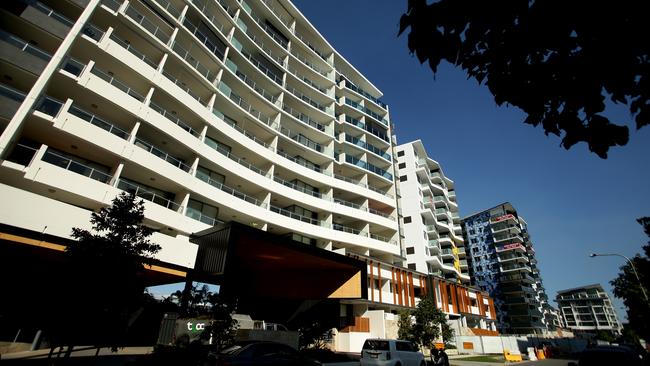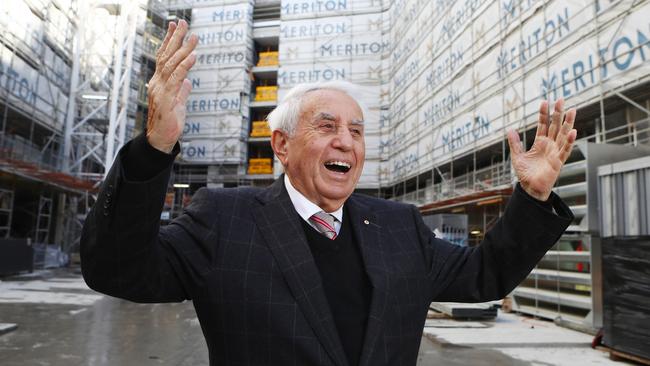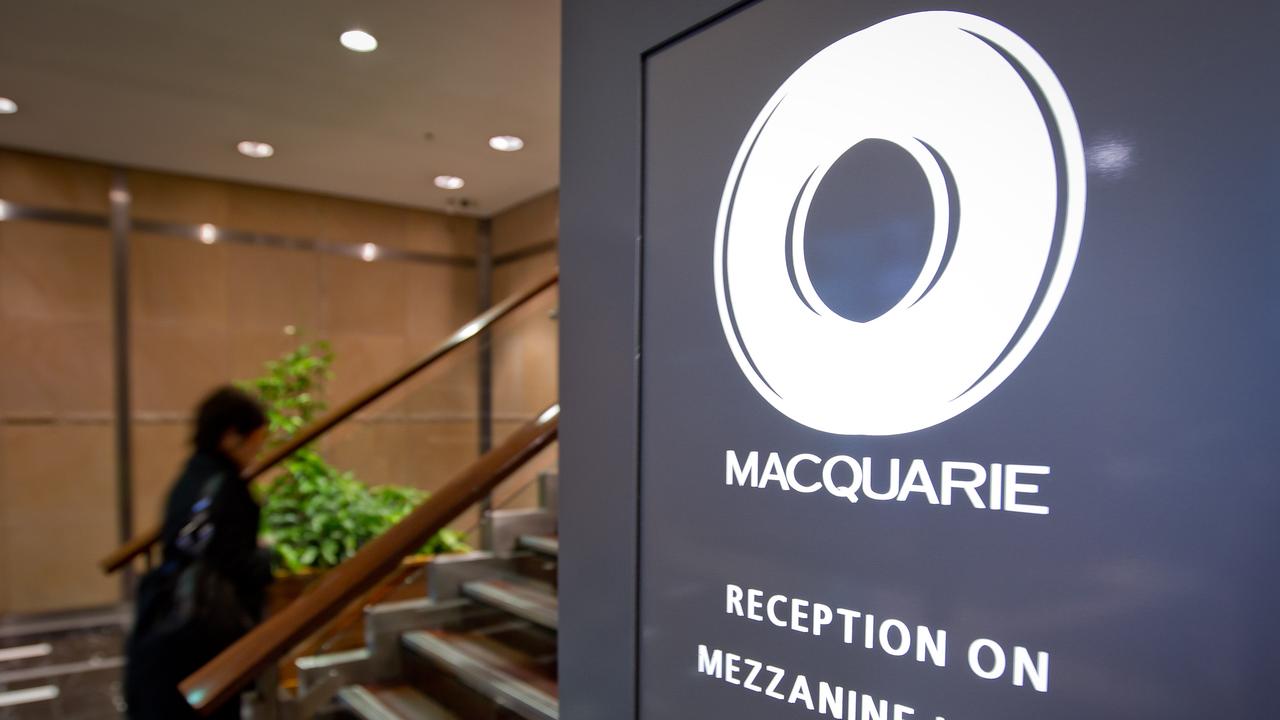
If it gathers pace we will see a rise in unemployment, defaults on bank mortgages and, of course, state governments will have lower stamp duty revenue so will be squeezed for money.
And all this is being brought about by a set of housing-boom nervous banking regulators who, if there is a slump in construction, are likely to face decisions they have never before encountered.
The leading city in the fall will be Brisbane, where the situation might become quite ugly.
In Sydney, Harry Triguboff says he expects apartment building rates to fall between 25 and 33 per cent over 12 to 18 months which, in anyone’s language, is a major decline.
In Melbourne the scene is a little more confused because there is strong demand for apartments and houses in suburban and outer suburban areas including Geelong and, on the other hand, there is a desperate problem in parts the inner city where the glut is greater than Brisbane. But despite the Melbourne city apartment problems, planning regulations have changed and those developers who don’t take advantage of their current permission will have to build under the new regulations, which substantially reduce the value of their property.
But once Melbourne sees Brisbane and Sydney building construction rates fall, the southern capital will follow.
I can’t recall such a widespread vigorous attack on any Australian industry, let alone one that has been driving the economy since the end of the mining boom.
The boom in inner city dwellings was created for the most part by Chinese demand. That demand has been hammered first by increasing regulations from China on taking money outside the country; second by the refusal of the Australian banks to fund the Chinese, and finally by a series of taxes and charges being imposed by state governments to make sure the Chinese feel unwelcome.
The overall Chinese apartment demand has now approximately halved. There has been a rise in Australian local investor demand from a low starting point but it nowhere near fills the China gap and local investor demand is being hammered as banks are under instructions from APRA to adopt a much tougher line on approving investor loans.
At the same time, banks are also increasing the interest rates charged to investors while the ALP plans to curb negative gearing.
Then everyone turns to first home buyers to fill the demand gap. Quite simply the prices are too high for most of them unless they can get parental help.
The final cog in the drive to create a dwelling building slump is the banks making the lending rules very tough for developers, who are often forced to find funding from non-bank sources, which is more expensive.
So we are not only hammering the demand but we are also making it very difficult to generate supply.
The crisis will be toughest in Brisbane where, a few years back, local planners were generous in their approvals and a large number of apartments were built and purchased by Australians, mainly funded by Australian banks.
The market is glutted and prices are coming down which means that there will likely be defaults to Australian banks. Building has slumped. The lower prices and likely Australian bank loan losses in Brisbane will be the first alert that problems are ahead. Once a property market starts to turn down there is no urgency for buyers to buy. That’s happening in Brisbane.
The price of Sydney apartments has fallen by 5 to 10 per cent and in Melbourne the fall in the inner city is much steeper. At this stage the cottage markets in both Sydney and Melbourne are holding well. But if the Brisbane and Sydney trends in apartment prices continue downwards the urgency to buy property will disappear. The fall can feed on itself.
Among the other capitals Perth is already experiencing a severe downturn while Adelaide will take a long time to recover from the vandalism inflicted on its power supply. Hobart has been in the doldrums for decades but is now showing clear signs of life.
The Australian banks are patting themselves on the back because very few of them have major exposures to the Chinese apartment purchasers in Melbourne and Sydney. In Sydney there would have been an enormous crisis with settlements by Chinese purchasers but for the “bank of Triguboff” which has loaned $280 million to Chinese buyers who otherwise couldn’t settle. Harry Triguboff expects his loan portfolio to rise to $400 million as more and more apartments are completed and the Chinese can’t settle. Other developers don’t have the balance sheet of Triguboff’s Meriton to enable them to fund the Chinese. Triguboff is helped in the lending exercise because he has a massive property leasing business so the apartments are earning an income to pay interest on the two-year interest-only loans.

There are few other banking markets in the world where the major banks have such great exposure to the residential property market. If a home building slump triggers a further price downturn via higher unemployment then the banks will face mortgage losses.
Of course if the cost of apartments and or houses were to fall it will enable first home buyers to get into the market. But the economic consequences of the fall will work against the first homebuyer.
To lower the cost, what is needed is greater efficiency in the development approval process, but that requires state governments to change. They will not change without a crisis. But such a crisis will take place if the rate of the rate of building declines sharply. State governments might then be forced to start to take the actions required to lower costs by streamlining the approval processes to enable first home buyers to get into the market.
The New South Wales government is trying to do this but its bureaucratic entanglements make it almost impossible without a crisis.
And a sidebar. The Prime Minister’s wife is trying to meddle in the Sydney planning process in some areas on social housing grounds. Whether she is right or wrong in her objectives is irrelevant. She is causing delays which are increasing prices for first home buyers.





My greatest fear for the Australian economy — a significant fall in the rate of home building — is starting to take place.